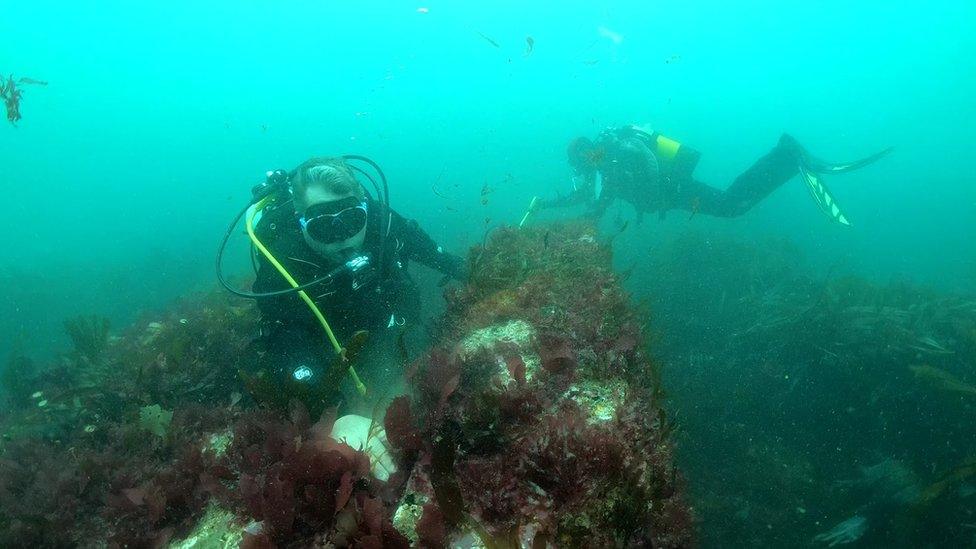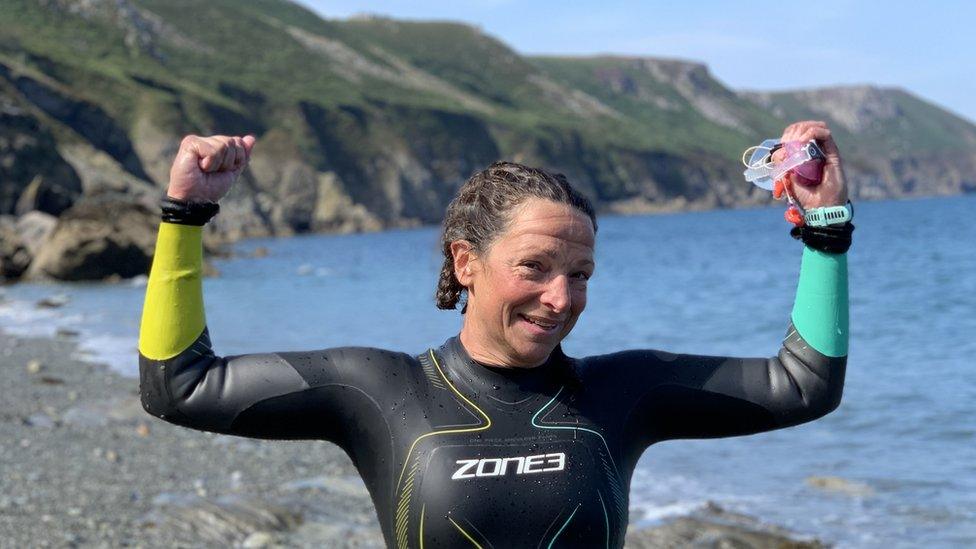HMS Montagu: Battleship wreck given protected status
- Published
HMS Montagu became grounded near the Isle of Lundy in 1906
The wreckage of a battleship in the Bristol Channel has been granted protected status by the government.
HMS Montagu became grounded near the isle of Lundy in 1906 and had to be salvaged and broken up.
The protection was granted partly as a result of archaeological material gathered by wounded veterans, who dived on the wreck last summer.
Among the findings were armour plating, gun turrets and shells left behind by the salvage operation.
The dives were organised by veterans' charity Help for Heroes, Historic England and Wessex Archaeology.
Dave Handley, from Help for Heroes, described the designation as "amazing news".

Kelp covers the wreck making it hard for divers to see
The new status for the wreck means the area is now considered a nationally important archaeological site.
A set of steps carved into the granite cliffs as part of the salvage operation was also granted the status.
Duncan Wilson, chief executive of Historic England, said the "distinctive" steps were "forever linked to the landscape" of the island.
"Combined, the wreck and the steps provide a rare group of maritime monuments," he added.

HMS Montagu was wrecked on the rocks of Lundy island in the Bristol Channel in 1906
Recreational divers will still be free to explore the ship but the remnants will be closely managed.
Due to the salvage operation and exposure to the powerful waves around the island, little of the initial wreck is left.

HMS Montagu
The battleship was launched in 1901 in response to rapid naval expansion in the build up to World War One.
On 30 May 1906 it became grounded in thick fog while conducting radio communication trials in secret.
The ship could not be saved and the remains had to be salvaged where they lay.
In 1907, as part of the salvaging operation, a series of steps were carved into the rock and a 10-tonne suspension bridge installed to ease access to the wreck.

Graham Scott, who helped co-ordinate the volunteers for Wessex Archaeology, described the wreck as a "giant jigsaw of bits, lying roughly in a ship shape".
One of the key challenges was to "search through the kelp and try in your mind to put the puzzle together", he said.

The divers were often accompanied in their research by an inquisitive population of juvenile seals
- Published7 July 2018

- Published24 August 2019

- Published28 May 2019
